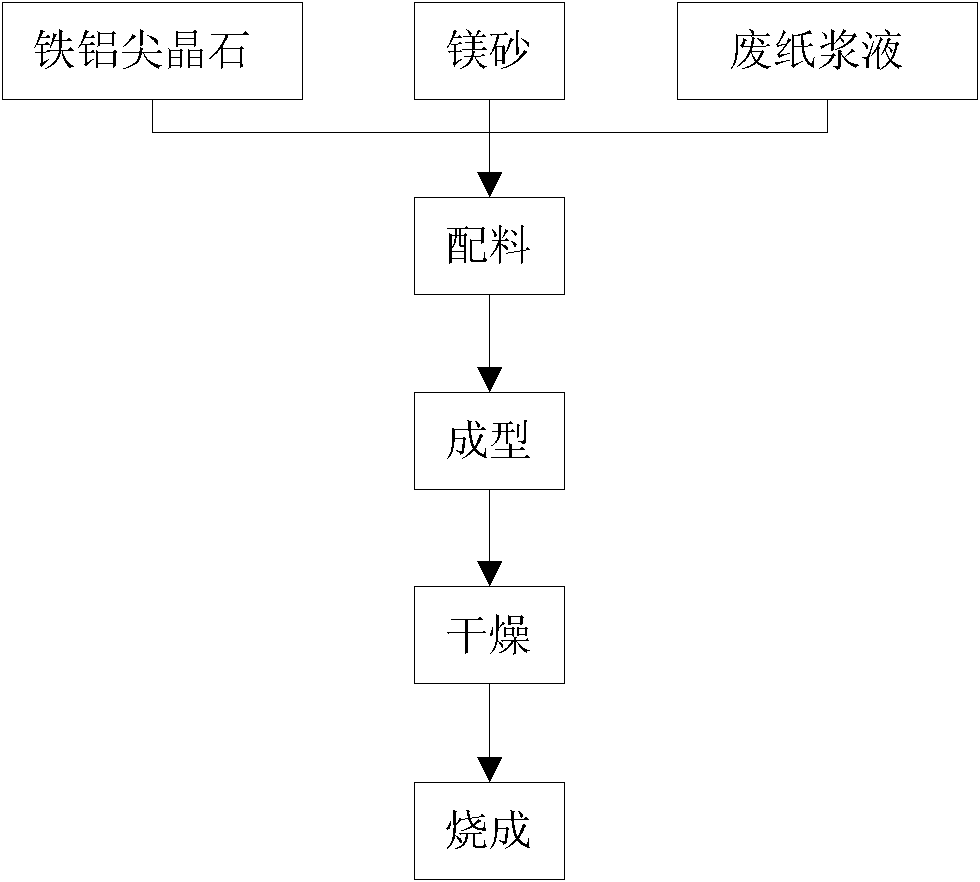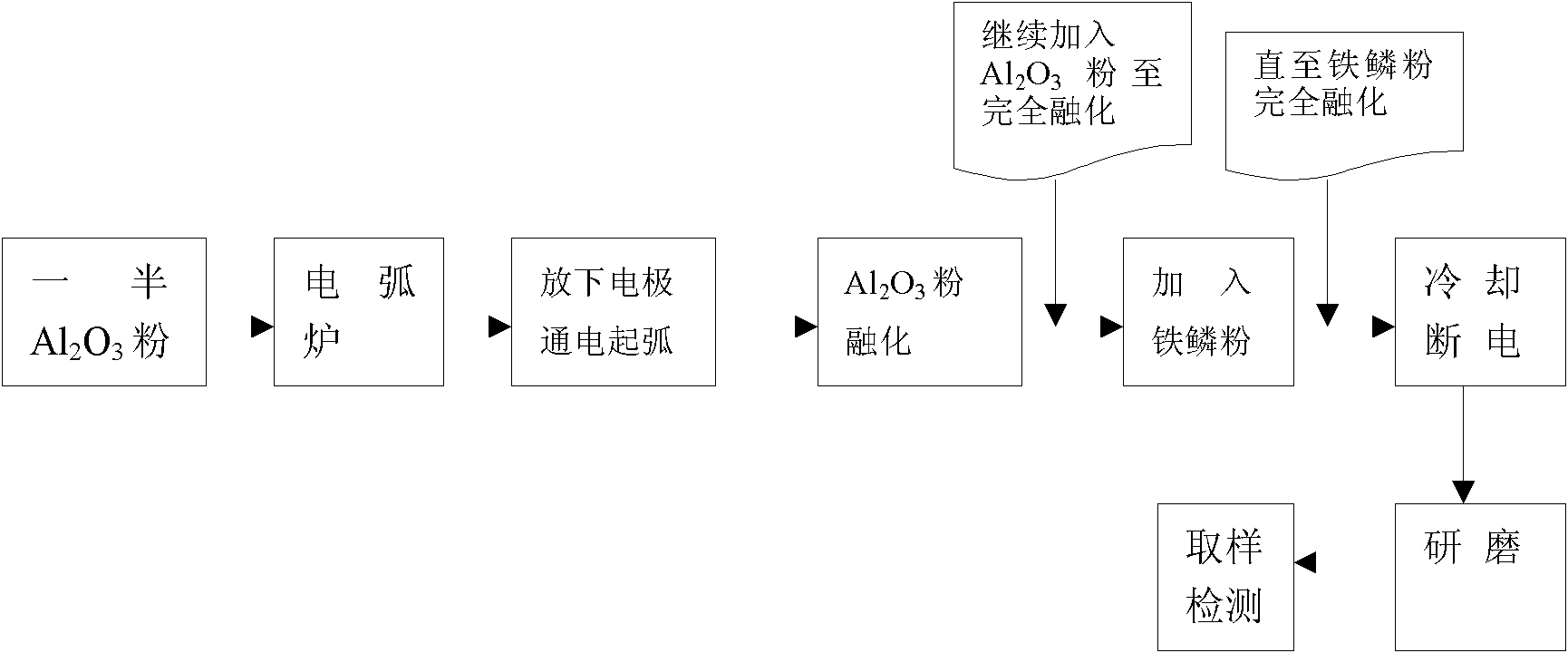Method for preparing magnesia-hercynite refractory material
A technology of iron-aluminum spinel and aluminum spinel, which is applied in the field of preparation of magnesia iron-aluminum spinel refractory materials, can solve the problems of poor hanging kiln skin, poor hydration resistance, poor thermal shock resistance, etc., and achieve Good thermal shock resistance, easy to hang kiln skin, and good resistance to cement clinker erosion
- Summary
- Abstract
- Description
- Claims
- Application Information
AI Technical Summary
Problems solved by technology
Method used
Image
Examples
Embodiment 1
[0029] First, the iron-aluminum spinel needed for the experiment was prepared by electromelting. The steps are as follows:
[0030] by FeO and Al 2 o 3 The powder ratio (weight percent) is 40:60 and weighed FeO powder and Al 2 o 3 powder raw material, and then the weighed Al 2 o 3 Pour 50% of the powder into the electric arc furnace, and place a piece of waste paper on the surface, and place the raw materials FeO powder and Al on the waste paper. 2 o 3 10% graphite block by powder gross weight and 5% strip-shaped iron filings by raw material gross weight, put down the electrode and make it contact with the graphite block, adjust the voltage to 110 volts, and feed the electric current. After 5 minutes, a violent light and heat generation occurs, and Al 2 o 3 The powder begins to melt slowly, the deeper the electrode is immersed in the liquid, the greater the current, the farther the electrode is from the liquid surface, the longer the arc is drawn, and then the remaini...
Embodiment 2
[0033] First, the iron-aluminum spinel needed for the experiment was prepared by electromelting. The steps are as follows:
[0034] by FeO and Al 2 o 3 Powder ratio (weight percent) is 60:40 and weigh FeO powder and Al 2 o 3 powder raw material, and then the weighed Al 2 o 3 Pour 50% of the powder into the electric arc furnace, and place a piece of waste paper on the surface, and place the raw materials FeO powder and Al on the waste paper. 2 o 3 10% graphite block by powder gross weight and 5% strip-shaped iron filings by raw material gross weight, put down the electrode and make it contact with the graphite block, adjust the voltage to 120 volts, and feed the electric current. After 5 minutes, a violent light and heat generation occurs, and Al 2 o 3 The powder begins to melt slowly, the deeper the electrode is immersed in the liquid, the greater the current, the farther the electrode is from the liquid surface, the longer the arc is drawn, and then the remaining 50%...
Embodiment 3
[0037] First, the iron-aluminum spinel needed for the experiment was prepared by electromelting. The steps are as follows:
[0038] by FeO and Al 2 o 3 Powder ratio (weight percent) is 50:50 and weigh FeO powder and Al 2 o 3 powder raw material, and then the weighed Al 2 o 3 Pour 50% of the powder into the electric arc furnace, and place a piece of waste paper on the surface, and place the raw materials FeO powder and Al on the waste paper. 2 o 3 10% graphite block by powder gross weight and 5% strip-shaped iron filings by raw material gross weight, put down the electrode and make it contact with the graphite block, adjust the voltage to 120 volts, and feed the electric current. After 5 minutes, a violent light and heat generation occurs, and Al 2 o 3 The powder begins to melt slowly, the deeper the electrode is immersed in the liquid, the greater the current, the farther the electrode is from the liquid surface, the longer the arc is drawn, and then the remaining 50%...
PUM
| Property | Measurement | Unit |
|---|---|---|
| particle diameter | aaaaa | aaaaa |
| particle diameter | aaaaa | aaaaa |
Abstract
Description
Claims
Application Information
 Login to View More
Login to View More - R&D
- Intellectual Property
- Life Sciences
- Materials
- Tech Scout
- Unparalleled Data Quality
- Higher Quality Content
- 60% Fewer Hallucinations
Browse by: Latest US Patents, China's latest patents, Technical Efficacy Thesaurus, Application Domain, Technology Topic, Popular Technical Reports.
© 2025 PatSnap. All rights reserved.Legal|Privacy policy|Modern Slavery Act Transparency Statement|Sitemap|About US| Contact US: help@patsnap.com



